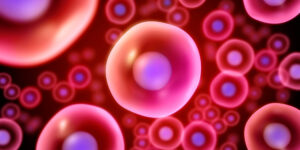The insulin receptor (IR) and the IGF-I receptor (IGF-IR) utilize common signalling pathways to mediate a broad spectrum of “metabolic” and “mitogenic” responses. This signalling network is also engaged by other receptor tyrosine kinases (RTKs).
Insulin and IGF-I receptors have distinct physiological functions exemplified by the different phenotypes of IR versus IGF-IR knockout (KO) mice. IR KO mice are born with almost normal size but die within a few days from acute ketoacidosis. IGF-IR KO mice are born small and die quickly from asphyxia due to the underdevelopment of thoracic muscles.
This downstream specificity is not inherent to the receptor structures since it has been shown that the IR and the IGF-IR can exert each other’s function in cases where the other receptor is absent. Thus, the IGF-IR can induce stimulation of glucose transport and glycogen synthesis, typical insulin metabolic effects, in fibroblasts from IR KO mice. Reciprocally, the IR stimulates thymidine incorporation and cell growth in a T-cell lymphoma line devoid of IGF-I receptors. Therefore, there is a paradox in having specific biological endpoints through ligand-specific receptors while the downstream signalling networks appear to be largely overlapping.
There is currently no precise solution to this conundrum, except to state that the cellular context and the differential “combinatorial” use of the components of a common network, rather than intrinsic receptor activity, appear to be major determinants of biological “mitogenic” versus “metabolic” endpoints. A system biology approach to the modelling of complex signalling networks appears to be the way of the future in order to unravel this complexity.
Click below to download the full article.


